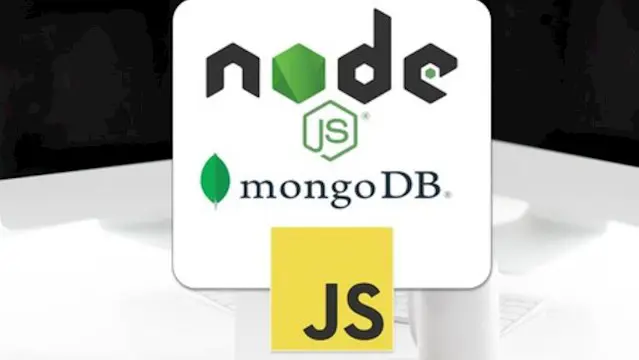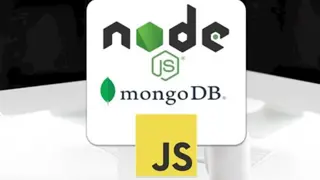
NodeJS Beginner to Intermediate JavaScript
NodeJS Express MongoDB connected together to update database content from Frontend Web Application using JavaScript
Discoveryvip
Summary
- Reed courses certificate of completion - Free
Overview
NodeJS is built for performance. NodeJS allows you to build complex and powerful application quickly and easily writing JavaScript code. NodeJS allows you to use JavaScript for not only web applications with the flexibility for a wide range of different purposes. Node brings JavaScript to the server, using Googles V8 engine.
Top Reasons for using Node.JS
-
In Demand Skillset - used by popular and large businesses
-
NodeJS is written in JavaScript which makes the transition to Node take less time if you are already familiar with JavaScript.
-
Perfect solution for a full stack developer dealing with backend and databases
-
JavaScript is easy to start with a write code and run code within your own computer
-
Easily to develop locally
-
Open Source with an active community and support
-
Node Package Manager can allow you to create complex applications using existing modules, NPM has a massive number of packages.
-
Node is well supported, large size community and many forms and groups to share code and get help
-
Can be used to build micro services
Curriculum
Course media
Description
#1 Introduction to Installing and Setup of Node
This section is a fast paced quick intro to NodeJS, and how you start using NodeJS. We discuss what NodeJS is and that it is not a programming language like JavaScript is but an interpreter and Environment for JavaScript.
Node is a lightweight framework developed on Chrome’s V8 engine that can be used for largeScale application development. It's scalable because the server can respond in a non-blocking way.
Process object which is a global that provides information, and control over, the current Node.js process. Because its global it is always available to Node.js applications without using require()
npm registry contains packages, many of which are also Node modules, or contain Node module
#2 JavaScript Fundamentals quick review of JavaScript Coding
Explore the fundamentals of JavaScript and writing JavaScript code within the Node. Loaded with examples about the basics of coding JavaScript. Back to the basics of JavaScript code . Because node uses JavaScript code this section will provide a refresher and quick overview of JavaScript. Designed to cover the core JavaScript required for the upcoming sections and writing Node.
#3 JavaScript Asynchronous programming
Asynchrony, in computer programming, refers to the occurrence of events independent of the main program flow and ways to deal with such events. How to add callbacks that run once a stack is complete.
Covering Input Output which accesses anything outside the application. Once the application is started it will be loaded into the machine memory.
Coding Examples, and practice code outputting into the console when ready
Event Driven programming which makes Node.js fairly fast compared to other similar technologies. Once the application starts it initiates its variables, declares its functions and then waits for the event to occur.
The two types of API functions in Node.js, Asynchronous, non-blocking functions and Synchronous, blocking functions.
The differences difference between blocking and non-blocking calls in Node.js.
Blocking occurs when the execution of additional JavaScript in the Node.js process must wait until a non-JavaScript operation completes. The event loop is unable to continue running JavaScript while a blocking operation is occurring. All the IO methods in node.js provide asynchronous versions, which are non-blocking.
Node keeps an event loop, which monitors when a task gets completed, which would then fire the corresponding events. Node.js overcomes the problem of blocking of I/O operations by using the event loop instead of threads.
Recursive functions, Function that calls itself is called a recursive function - must have a condition to break the loop.
The EventEmitter module makes possible the communication and interaction between objects in Node. EventEmitter provides properties like on and emit. The on property is used to bind a function with the event and emit property is used to fire an event.
#4 Node Modules
Each module in NodeJS has its own context and cannot interfere with other modules. Modules are like libraries that you can include into your application. Node.js has a set of built-in modules which you can use without any further installation like http, fs, path, and url.
You can create your own modules, and easily include them in your applications. Save them locally and use within your node application as needed. Perfect to separate functionality for your application. To make properties and methods available outside the module file use the keyword exports.
NPM hosts thousands of third party modules, free packages to download and use. A package in Node.js contains all the files you need for a module.
Debugging - The try...catch statement marks a block of statements to try and specifies a response should an exception be thrown.
#5 Node Web Application with Express
Express is a minimal and flexible Node.js web application framework that provides a robust set of features for web and mobile applications. Explore how to setup a web application quickly with Express.
The arguments which are available to an Express JS route handler function are request (request Object), response (response Object) and optional Next which can pass control to one of the subsequent route handlers.
#6 MongoDB with Frontend web page interaction using Node and Express
The official MongoDB Node. js driver allows Node. js applications to connect to MongoDB and work with data. The driver features an asynchronous API which allows you to access method return values through Promises or specify callbacks to access them when communicating with MongoDB.
Final Project in Section #6
Creating a fully functional node application, that uses Express to run a web application. Connect to a MongoDB and using Node allow the frontend web application to access the Database items, full CRUD interaction.
-
Create a web application using Express - output html file from public folder
-
Setup a MongoDB in the cloud prep to connect using NodeJS
-
Create and test insert into the database
-
Setup Frontend web application
-
Add DOM event listeners to trigger requests
-
Generate visual response as HTML from the Node response object
-
Update and create interactive list of database content CRUD
-
Add HTML updates to send requests to database.
Create (POST)
Read (GET)
Update (PUT)
Delete (DELETE)
Who is this course for?
- Anyone who wants to learn more about NodeJS
- JavaScript Developers
- Web Developers
Requirements
-
Web development experience
-
Prior Coding experience
-
Access to a computer with Admin permissions
-
Use of a code editor
Questions and answers
Currently there are no Q&As for this course. Be the first to ask a question.
Certificates
Reed courses certificate of completion
Digital certificate - Included
Will be downloadable when all lectures have been completed
Reviews
Currently there are no reviews for this course. Be the first to leave a review.
Legal information
This course is advertised on reed.co.uk by the Course Provider, whose terms and conditions apply. Purchases are made directly from the Course Provider, and as such, content and materials are supplied by the Course Provider directly. Reed is acting as agent and not reseller in relation to this course. Reed's only responsibility is to facilitate your payment for the course. It is your responsibility to review and agree to the Course Provider's terms and conditions and satisfy yourself as to the suitability of the course you intend to purchase. Reed will not have any responsibility for the content of the course and/or associated materials.


